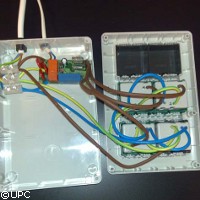A switched-on device that switches off power
Almost four billion electronic products are left in the stand-by mode every day in EU homes. This is the little red light that allows you to turn your television (and other appliances) on and off remotely. The European Commission estimates that the stand-by mode accounts for an outstanding energy waste bill of EUR 7 billion per year and consequently contributes 20 billion tonnes of carbon dioxide emissions into the atmosphere. A new product developed and marketed in Spain may help turn off the stand-by mode for good. Countries around the globe (including Europe and the US) have invested large sums of money in advertising campaigns designed to encourage their citizens to turn off their domestic appliances. Currently, some countries (such as the UK) are even considering regulations to either prohibit the sale of appliances with the stand-by mode or impose an obligatory manual turn-off switch. The stand-by mode, intended to make life easier, is now an unprecedented and widespread energy problem. What's worse is that thousands of electronic and domestic appliances on the market today have a built-in stand-by mechanism (in fact, some products can not be turned off at all). Over the course of a year, a television set is on stand-by mode more often than when it is actually turned on; as a result, it consumes more energy and costs the consumer more. This 'convenience' system now accounts for 12% of the electricity bill in homes in developed countries, which equates to over 1% of carbon dioxide emissions on the planet. In response, researchers from the Technical University of Catalonia (UPC) Center for Technological Innovation in Static Converters and Actuators (CITCEA-UPC) in Spain targeted the problem by developing a device that could control the energy consumption of each domestic appliance. The result is 100%Off, an 8-bit microprocessor that measures how much current is being used by an appliance during normal operation and when it is in stand-by. When it detects the latter, it automatically switches it off (the user doesn't need to do anything). When an appliance needs to be used again, the device has a green button that easily allows for it to be turned back on. The project's director, Miquel Teixidó, said the product developed by his team has the potential to reduce residential electricity consumption by up to 20%. A household in Spain that spends EUR 367 on electricity per year, for instance, would save EUR 44. Now patented and marketed by Spanish company Good For You, Good For the Planet, 100%Off works for all the appliances we all already have at home and can also be adapted for equipment that will hit the market in the future. At home, the technology has the added benefit of protecting appliances against power surges and can even increase a product's lifespan. At the office, this could even mean adapting the technology for a range of products, such as laser printers.
Countries
Spain



